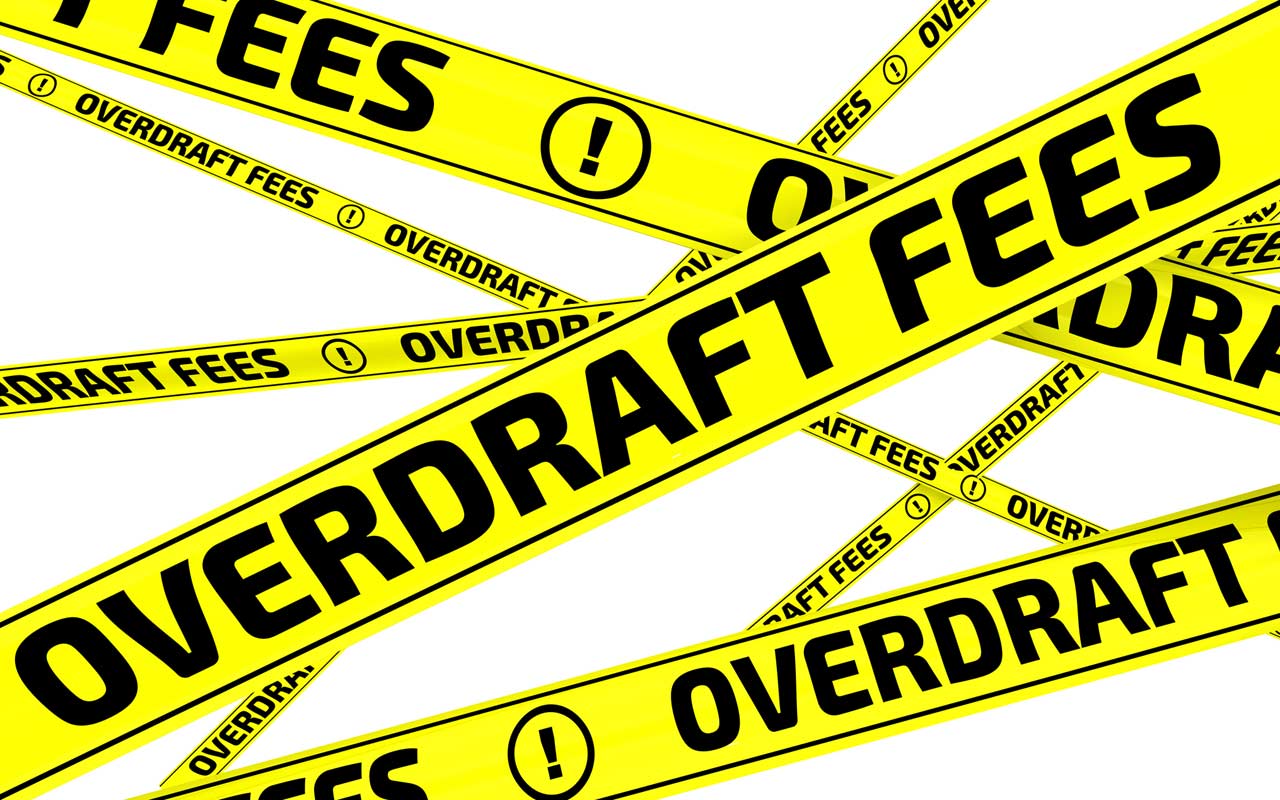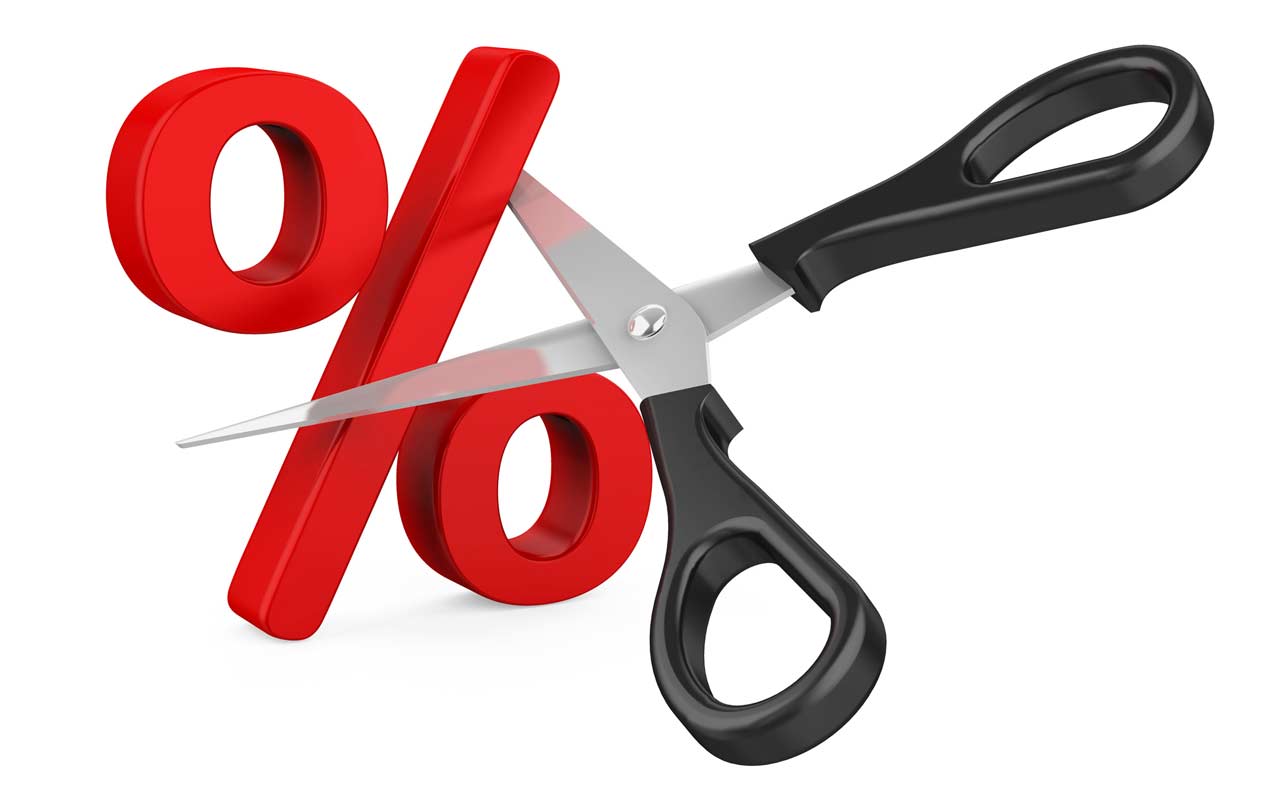How to Beat Pesky Fees
No matter how much you try to swat them away, pesky fees keep nibbling at your travel bookings, wireless plans, bank accounts, investments and pretty much every other part of your financial life.


No matter how much you try to swat them away, pesky fees keep nibbling at your travel bookings, wireless plans, bank accounts, investments and pretty much every other part of your financial life. Although the fees may not seem like much on their own, they can add up to hundreds or even thousands of dollars a year, putting a big dent in your wallet.
Here, we’ve listed common fees in five categories, plus ways to eliminate or reduce them. Some of the fees are legitimate—professionals such as investment advisers and real estate brokers deserve compensation, after all. But if you’re overpaying for a service, you can make moves to tug down the rate. And with some preparation and knowledge, you can wipe out the most irritating charges.

Travel: Airline Seat-Selection Fees
- Typical amount: About $5 to $40 per seat—but the most-coveted seats may cost you even more
- How to beat them: If you let the airline assign you a seat, you won’t pay a fee. Beyond that, the best way to sidestep a seat-selection fee depends on the reason it’s being charged. If you have a basic-economy ticket, you’ll pay a fee to choose any seat—or you may not have the option to pick a seat at all. Booking a ticket in a higher-level fare class may be worthwhile if, say, you want to sit near travel companions or if extra legroom is nonnegotiable. With a standard ticket, you’ll choose from the widest selection of free seats if you book months in advance. But the earlier you book, the more likely your itinerary will undergo a scheduling or aircraft change, so it’s wise to review your reservation online periodically and to update your seat choice if the airline notifies you of a change, says Scott Mayerowitz, of travel website The Points Guy. If you have elite status with an airline, you’ll likely get a desirable seat at no extra charge even if you book at the last minute.
Southwest Airlines doesn’t charge seat-selection fees and lets passengers choose their seats as they board. But the airline assigns your place in line based on when you check in, so the farther back you are, the less likely you’ll get the seat you want. (The EarlyBird boarding fee of $15 to $25 per flight gives you priority.) Check in to your flight online as early as possible to help boost your boarding position.

Travel: Airline Baggage Fees
- Typical amount: $30 for the first checked bag and $40 for the second with major U.S. airlines
- How to beat them: If you regularly fly with a certain airline, consider opening one of its credit cards. The Citi/AAdvantage Platinum Select card ($99 annual fee, waived the first year), United Explorer card ($95, waived the first year) and Gold Delta SkyMiles card ($99, waived the first year) offer the first checked bag free on their respective airlines. Plus, at least one of the cardholder’s travel companions on the reservation gets a free bag, too. Ordinarily, if you and a travel companion both check a bag on a round-trip flight, you’ll pay a total $120 in baggage fees—or more than the annual fee on any of those cards. Southwest Airlines passengers can check two bags free of charge.
Generally, carry-on bags are free with the biggest U.S. airlines. But note that if you have a basic economy ticket with United, you may be charged a checked-bag fee plus a $25 “gate handling charge” if you bring a full-size carry-on bag to the gate. Discount carriers such as Frontier and Spirit charge for carry-on bags, and the fees are often lowest if you pay them when you book. Plus, you may pay more to take a bag into the cabin than to check it. For a mid-February flight from Atlanta to New York City, for example, Spirit recently charged $33 if you paid for a carry-on bag when reserving your flight but $28 for a checked bag.

Travel: Hotel Resort Fees
- Typical amount: About $23 per day, according to ResortFeeChecker.com
How to beat them: Resort fees, which some hotels add on to guests’ regular nightly rate for amenities (whether or not you use them), are under fire. Both Marriott International and Hilton are facing lawsuits that, if successful, may cause hotels to ditch the fees or disclose them more prominently, and a bill proposed in the U.S. House of Representatives would require the fees to be included in a hotel’s advertised price. At ResortFeeChecker.com, you can look up hotels to see how much they charge. Try asking your hotel to waive the fee; if you don’t plan to use its amenities or if, say, the gym is closed for repairs, you may be able to make a case. Certain chains, including Hilton and Hyatt, typically charge no resort fee when you book a room with rewards points.

Wireless Plans: Activation and Upgrade Fees
- Typical amount: $20 to $40
- How to beat them: When you start a new line of service with a wireless carrier or upgrade to a new phone with your current provider, you may be charged a fee for it. An activation fee is sometimes avoidable by switching to a new carrier during a promotional period in which it waives the fee. And some carriers reduce or eliminate the fee if you upgrade your device online. Verizon Wireless, for example, cuts its $40 fee to $20 if you upgrade online or through the Verizon app, and you’ll pay no fee if you buy an unlocked phone and use your previous device’s SIM card. T-Mobile doesn’t charge its $20 “assisted support” fee if you upgrade your phone online or through T-Mobile’s app.

Wireless Plans: International Roaming and Data Charges
- Typical amount: About $2 for each megabyte of data used, 25 cents to 50 cents for text messages sent and 25 cents to $3 per minute for calls
- How to beat them: Heading out of the country without first tweaking your wireless plan could result in painful surcharges. “If you’re using your phone as you regularly do at home, your daily cost could be upward of $100,” says Tina Chang, of WhistleOut, a website that compares phone plans. Check out your carrier’s international packages if you intend to use your phone frequently while overseas. Verizon and AT&T both offer add-ons that allow you to access your regular domestic plan in more than 100 countries for an extra $10 per day that you use your phone while you’re overseas.
If you travel abroad often, consider a plan that includes international services. Some T-Mobile and Sprint plans include text messages, low-speed data and calls for 25 cents per minute, and you can add passes for high-speed data. Sprint, for example, charges $5 per day or $25 per week for high-speed data in most international destinations.

Wireless Plans: Miscellaneous Fees
- Typical amount: A few dollars per month
- How to beat them: Keep an eye on your wireless bill for services that you don’t want or never requested. Verizon, for example, offers new customers a free trial of its cloud storage service for 30 days, then charges $5 per month if you don’t cancel the subscription before the trial ends. Verizon customers who activate a new Android device also get 30 free days of premium visual voicemail service, which comes with a $3 monthly fee if you don’t unsubscribe after the free period.

Banking: ATM Surcharges
- Typical amount: An average of $4.72 in combined charges from the withdrawer’s bank as well as from the ATM operator, according to Bankrate.com
- How to beat them: A recent survey of consumers conducted by personal finance site MagnifyMoney found that ATM surcharges were the most hated of any kind of fee. You can avoid them by selecting a checking account that charges no fee when you use an out-of-network ATM and that reimburses the fees that ATM owners charge. Premium accounts from large banks often refund ATM fees (you’ll likely have to carry a high minimum balance to qualify), and so do some free online checking accounts. Or pick a bank that participates in a large ATM network. With Ally Bank’s checking account, you can access more than 43,000 U.S. ATMs in the Allpoint network fee-free, and you’ll be refunded up to $10 monthly in out-of-network fees.
- Another idea: When you use your debit card for a purchase at a store, ask for cash back. But be aware that a few stores, including Kroger and Harris Teeter, may charge a fee.

Banking: Monthly Maintenance Fees
- Typical amount: An average of $15.05 for interest-bearing accounts and $5.61 for non-interest-bearing accounts, according to Bankrate.com
- How to beat them: Most checking accounts waive the monthly fee if you keep a minimum balance or have a direct deposit or regular transfer. That may be worthwhile if you prefer banking with big institutions, which usually impose such requirements, or you keep enough in your checking account that meeting a minimum is of little concern. Otherwise, look for free checking—accounts from several online banks, including Ally Bank Interest Checking and Capital One 360 Checking, charge no monthly fee.

Banking: Overdraft Fees
- Typical amount: An average of $33.36, according to Bankrate.com
- How to beat them: If you’re enrolled in a service through which your bank covers any overdraft of your checking account, you may be hit with a stiff fee for each transaction that dips below your account balance. Many institutions let you link your checking account to a savings account (or other backup source of funds) and will automatically transfer money to checking if you overdraw your account—typically free or at a lower charge than for a standard overdraft. Or you could opt out of overdraft protection, and your debit card will be declined at the register if your checking account is short on funds—though you could still be charged an insufficient-funds fee for electronic transfers or checks that exceed your account balance.

Investing: Asset-Management Fees
- Typical amount: About 1% of your investment balance
- How to beat them: If you’re paying a professional a percentage of your assets under management, consider whether a different payment structure may be more appropriate and less costly. If you’re looking for less emphasis on investment advice and more of a focus on general financial-planning guidance, such as determining when to take Social Security or how to balance college and retirement savings, you may benefit from paying an adviser a subscription or hourly fee, says Christine Benz, director of personal finance for Morningstar. Such fees may also make sense if you consult your adviser infrequently. Advisers in the Garrett Planning Network offer services on an hourly basis and typically charge about $180 to $300 per hour.
Or consider switching to a robo adviser, which usually provides basic, automated investment advice, including how to best allocate your portfolio. Some robo advisers offer optional assistance from a human, too. Betterment, for example, charges a 0.25% annual fee for its basic Digital service or 0.40% to get phone access to an adviser with its Premium plan (which requires a $100,000 minimum investment).

Investing: Expense Ratios
- Typical amount: An average of 0.48%, according to Morningstar
- How to beat them: A mutual fund’s expense ratio represents the amount of your investment that goes toward operating expenses. Many actively managed funds charge well above the average. If you made an initial investment of $10,000 in a fund that charges 1%, contributed $1,000 a year to it and earned a 6% rate of return, you’d pay about $20,000 more in fees over 30 years than if you chose a fund with a 0.25% expense ratio. On a positive note, the average asset-weighted expense ratio, which approximates how much investors actually pay rather than what funds charge, has dropped every year since Morningstar started tracking it in 2000. The reason: competition from the plethora of index mutual funds and exchange-traded funds. “Index funds and ETFs are your friends if you’re looking to lower your portfolio’s total cost,” and you can easily assemble a well-diversified portfolio with fees of 0.1% or less per year, says Benz. Some fund companies charge less than others, too. In the Morningstar survey, Vanguard had the lowest expense ratio, followed by State Street and BlackRock/iShares.
If you prefer actively managed funds, check out the our favorite no-load mutual funds—which includes many options with low-to-below-average fees—the Kiplinger 25.

Home: Agent Commissions
- Typical amount: 5% to 6% of a home’s sale price
- How to beat them: When you sell a home, you typically pay a commission to your listing agent, who splits it with the buyer’s agent—3% of the sale price to each agent is a common structure. Although 73% of agents surveyed by the Consumer Federation of America said they will not negotiate on commission, it’s worth asking your agent whether he or she will cut you a break. In the survey, 17% of agents said they would drop the commission by a percentage point or two if they also found a buyer for the home. Or, if your listing agent is also representing you as a buyer, he or she stands to collect a commission from both transactions and may be willing to reduce the fee.
Agents also tend to be more amenable to a lower commission if you have a turnkey home that is likely to sell quickly, says Sarah Hood, managing broker for UpNest, a website on which agents compete for business from home buyers and sellers. When agents make proposals to sellers through UpNest, they often cut their standard commissions by about one-half of a percentage point to two points, says Hood. If you successfully negotiate a lower commission, check whether your agent is reducing the share for the buyer’s agent; if that’s the case, buyer’s agents may be less inclined to show clients your home.
Alternatively, consider brokerage Redfin, which charges a listing fee of 1.5% of the sale price, or 1% if you also buy a home with Redfin. (Sellers also pay a commission to the buyer’s agent—usually 2.5% to 3%.) You work with a Redfin agent, who is paid with a salary and bonuses rather than on commission. If you purchase a home through Redfin, in most states you get a refund on a portion of the buyer commission—an average of $1,700. Similarly, UpNest offers a buyer refund, which is typically 10% to 40% of the buyer’s agent commission, says Hood.

Home: Closing Costs
- Typical amount: 2% to 6% of a home’s sale price
- How to beat them: A home sale comes with a collection of fees known as closing costs. Many of them are associated with taking out a mortgage, so buyers usually shoulder the bulk of the costs. Focus first on securing the lowest interest rate possible—in the long run, that will have the greatest impact. Then look over the fees. Within three business days after you apply for a mortgage, the lender must provide a document listing estimated closing costs. Check for so-called junk fees from the lender, which may include charges for application, loan processing, document preparation or underwriting. Ask your lender to explain each fee and see whether he or she will remove or reduce any that seem redundant or excessive. Citing lower closing costs from another lender may also persuade the lender to reduce such fees.

Home: Title Insurance
Typical amount: An average total of nearly $1,400, according to ValuePenguin
How to beat it: Title insurance, which involves a one-time fee and offers protection from future claims against a home, is part of the package of closing costs. But it’s worth singling out because it’s one of the biggest expenses, and you can usually pick the provider.
Title insurance comes in two forms: a policy for the mortgage lender, for which the home buyer pays the fee, and a homeowner’s policy, which may be paid for by the buyer or seller or divided between the two, depending on the state. The lender’s policy protects its interest from claims against the property, and the owner’s policy protects you.
Regulators in some states, including Florida, New Mexico and Texas, require all title companies to charge the same rate for title insurance, says Jeremy Yohe, of the American Land Title Association. But in other states, you may save by comparing services—up to $500, according to the Consumer Financial Protection Bureau. At www.homeclosing101.org, you can search for title insurers in your area.
Profit and prosper with the best of Kiplinger's advice on investing, taxes, retirement, personal finance and much more. Delivered daily. Enter your email in the box and click Sign Me Up.

Lisa has been the editor of Kiplinger Personal Finance since June 2023. Previously, she spent more than a decade reporting and writing for the magazine on a variety of topics, including credit, banking and retirement. She has shared her expertise as a guest on the Today Show, CNN, Fox, NPR, Cheddar and many other media outlets around the nation. Lisa graduated from Ball State University and received the school’s “Graduate of the Last Decade” award in 2014. A military spouse, she has moved around the U.S. and currently lives in the Philadelphia area with her husband and two sons.
